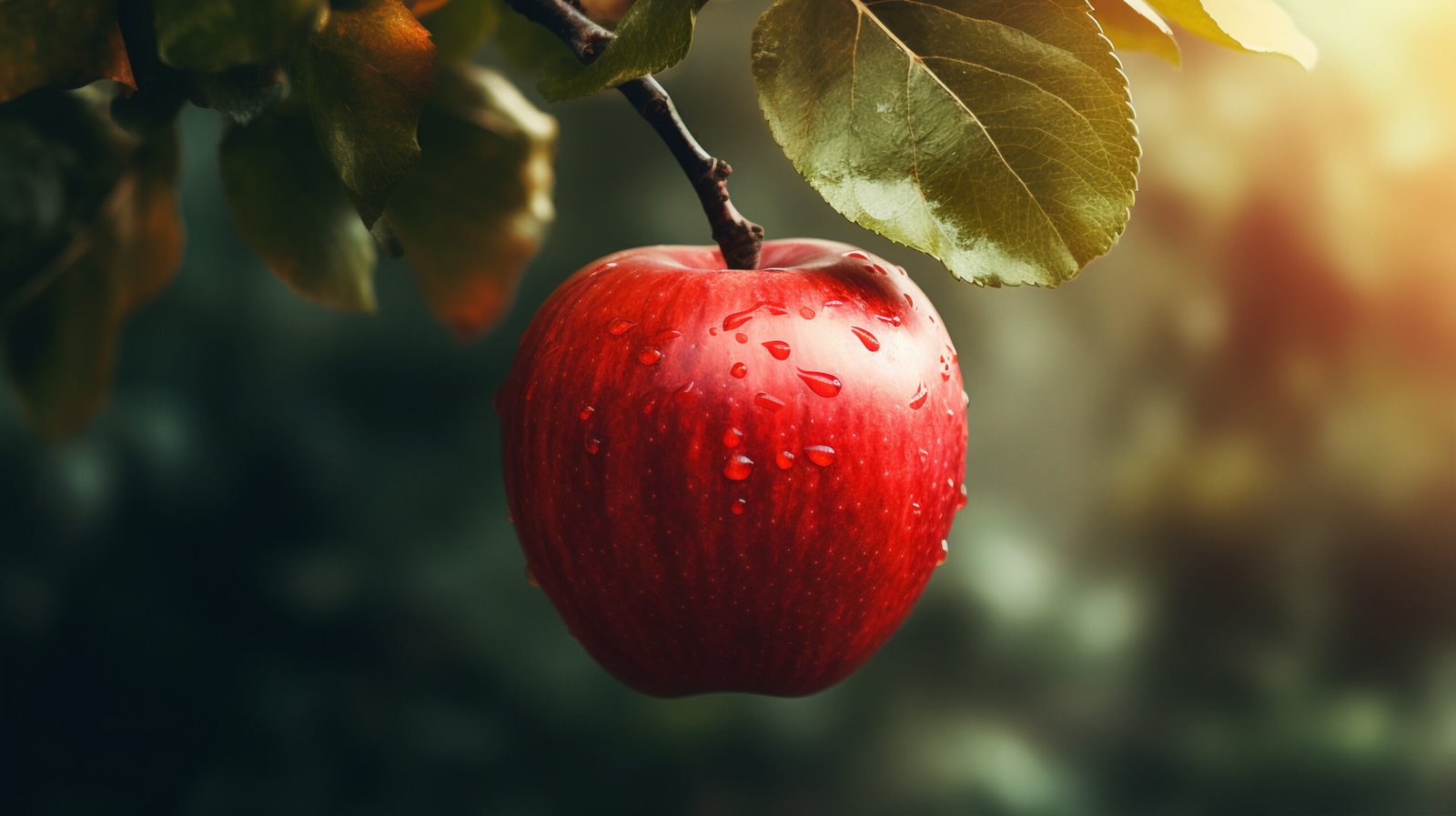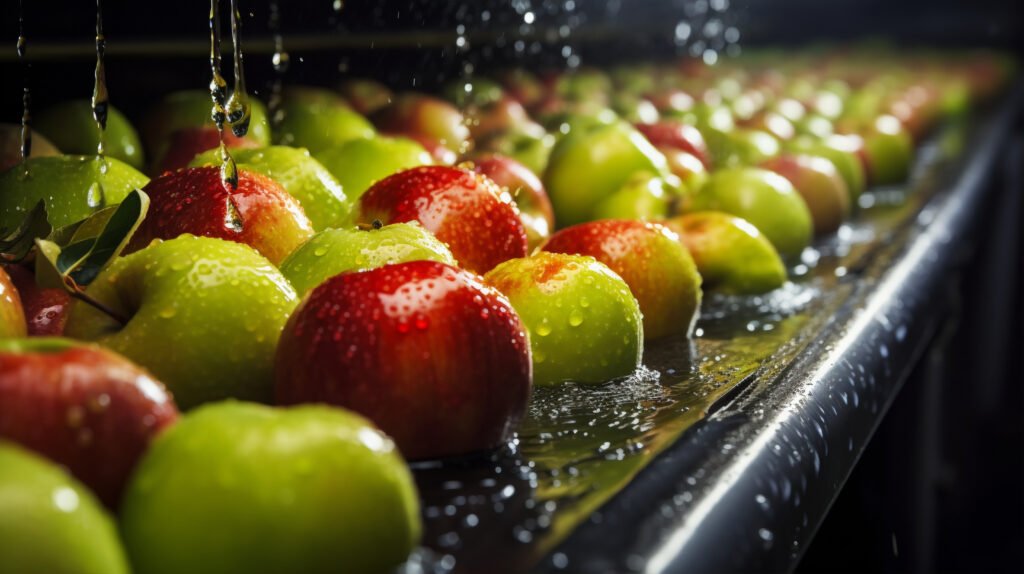Latest News
Apple Farming Business Plan in India | Step-by-Step Cultivation and Market Guide

Apple Farming in India is a profitable horticultural venture, primarily grown in the Himalayan states. With growing domestic demand and export potential, farmers are increasingly adopting improved apple varieties and high-density planting methods. This blog provides a complete guide to apple farming, covering ideal climatic conditions, varieties, orchard setup, pest control, and harvesting techniques. Learn how to maximize yield, manage post-harvest handling, and tap into India’s growing fresh and processed apple markets through scientific, eco-friendly, and high-yield practices.
Why Apple Farming Is a Profitable Option
Apples are one of the most consumed and commercially valued fruits in India. Due to:

-
Rising urban demand for fresh fruit
-
Value addition (juices, jams, and canned slices)
-
Supportive government policies and subsidies
-
Improved rootstocks and high-density planting systems
apple farming has become a key driver of horticulture-based income, especially in Himachal Pradesh, Jammu & Kashmir, Uttarakhand, and North-East states.
Ideal Conditions for Apple Cultivation
✅ Climate
-
Temperate regions are essential
-
Chilling hours: 800–1,200 hours below 7°C
-
Ideal temperature: 21°C to 24°C during growth
-
Apples require cold winters and mild summers
✅ Soil
-
Well-drained loamy soil
-
pH range: 5.5 to 6.5
-
Avoid waterlogging and heavy clay soils
-
Soil should be deep and rich in organic matter
Best Apple Varieties Grown in India
| Variety Name | Type | Best Growing Regions |
|---|---|---|
| Red Delicious | Table variety | Himachal Pradesh, J&K |
| Royal Delicious | Table variety | Uttarakhand, HP |
| Golden Delicious | Table/processing | Himachal, Kashmir |
| Fuji | Sweet, crisp | High altitude areas |
| Gala | Early maturing | North-East, Sikkim |
| HRMN-99 (Climate Resilient) | Drought-tolerant | Non-traditional apple zones |
High-Density Apple Plantation: The New Trend
Farmers are increasingly adopting high-density apple orchards using dwarf rootstocks like M9, MM106, and B9.
Advantages:
-
Early fruiting (within 2–3 years)
-
More trees per acre (up to 2,000)
-
Higher yield and better quality
-
Easier maintenance and harvesting
-
Suitable for smaller land holdings
Orchard Planting & Management
Planting Season
-
Best time: December to March
-
Pits of 1m³ filled with FYM, topsoil, and neem cake
Spacing
-
Traditional: 6 m × 6 m
-
High-density: 1.5 m × 3 m (row to row)
Irrigation
-
Drip irrigation preferred
-
Moisture required during flowering and fruit development
-
Avoid water stress during fruiting
Fertilizer & Nutrient Management
| Age of Tree | FYM (kg/tree) | N (g) | P (g) | K (g) |
|---|---|---|---|---|
| 1 Year | 10 | 100 | 50 | 50 |
| 5+ Years | 40 | 500 | 300 | 300 |
Micronutrient sprays (Zn, B, Mn) should be applied during the growing season to enhance fruit quality.
Pest and Disease Management
Common Pests:
-
Codling moth
-
Woolly aphid
-
Red spider mites
Diseases:
-
Apple scab
-
Powdery mildew
-
Fire blight
Control Measures:
-
Use Neem oil or Trichoderma sprays
-
Prune affected branches
-
Ensure proper orchard hygiene
-
Rotate approved bio-pesticides and avoid chemical overuse
Apple Harvesting and Yield
-
Apples are harvested 120–150 days after full bloom
-
Maturity is tested using color, size, and sugar content
-
Harvest manually to prevent bruising
Average Yield:
-
Traditional orchards: 8–10 tonnes/acre
-
High-density orchards: 20–25 tonnes/acre after 4–5 years
Post-Harvest Handling and Marketing
-
Grading by size, shape, and quality
-
Cold storage increases shelf life (0°C to 2°C)
-
Packaging in corrugated boxes for better transport
-
Sell through mandis, agri-cooperatives, or directly to retailers
-
Value-add via juice, jelly, vinegar, or apple cider processing
Government Support & Schemes
-
MIDH (Mission for Integrated Development of Horticulture)
-
RKVY (Rashtriya Krishi Vikas Yojana) for high-density orchards
-
NHB subsidies for cold storage and pack houses
-
PMKSY for irrigation assistance
Farmers can consult Krishi Vigyan Kendras (KVKs) or Horticulture Boards for training and financial aid.
Conclusion
Apple farming in India has transformed from a traditional practice to a scientifically managed and technology-driven enterprise. With the rise of high-density plantations, better varieties, and cold-chain infrastructure, farmers can achieve high returns and access premium markets. Whether in the Himalayas or emerging temperate zones like Meghalaya and Arunachal Pradesh, apple cultivation offers sustainable income and agro-tourism potential in the coming years.
FAQs
Q1: What is the best time to plant apples in India?
December to March is ideal for planting apple saplings in most regions.
Q2: Can apples be grown in non-Himalayan regions?
Yes, with varieties like HRMN-99 and improved rootstocks, apple farming is now possible in parts of HP foothills, NE India, and even Karnataka.
Q3: When do apple trees start bearing fruit?
Traditional varieties take 5–7 years, while high-density orchards with dwarf rootstocks can bear fruit in 2–3 years.
Q4: Are subsidies available for apple farming?
Yes. Schemes under MIDH, NHB, and PMKSY offer support for planting, irrigation, and infrastructure.
Q5: How profitable is apple cultivation?
Well-managed high-density apple orchards can earn Rs. 3–5 lakhs per acre annually after the 4th year.















